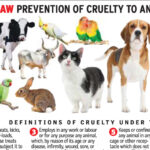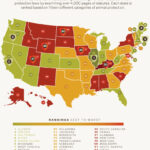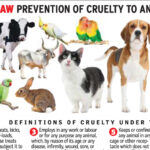When faced with the harrowing reality of animal cruelty, the imperative question that often arises is: “Who should I notify?” Reporting suspected abuse is more than a civic duty; it can be a lifeline for suffering animals. However, navigating the maze of local shelters, humane societies, and government agencies requires acuity and persistence. Understanding the most effective avenues for reporting such atrocities is critical in combating this pervasive issue. This comprehensive guide aims to illuminate the various entities dedicated to addressing animal cruelty, ranging from local organizations to federal agencies.
To begin with, local animal shelters and humane societies are the frontline warriors against animal abuse. These institutions are equipped with resources, knowledge, and, crucially, the local jurisdiction necessary to act swiftly. If you suspect that a pet or stray is being mistreated or neglected, reaching out to your nearest animal shelter should be your first recourse. Animal shelters often have pet adoption initiatives, volunteer programs, and educational resources that enhance their ability to intervene effectively. They can provide immediate assistance and advice on the next steps.
In addition to shelters, local law enforcement agencies also play a pivotal role in addressing animal cruelty. While often synonymous with human-related crimes, police departments are equipped to handle cases of animal abuse as well. Most jurisdictions have officers trained to address such instances—sometimes even with the assistance of specialized animal control units. If you witness a severe situation or ongoing abuse, particularly one that poses an immediate threat to the animal’s life, contacting your local police is paramount. They can facilitate emergency rescues and gather evidence crucial for future legal proceedings. However, it’s important to ensure that you provide them with as much detail as possible, including location, descriptions, and any photographic evidence.
If local resources are insufficient or lack the necessary response, consider reaching out to state animal control agencies. These organizations oversee animal welfare at a broader, often legislative level. Each state has its unique set of laws regarding animal protection, and these agencies can enforce statutes designed to safeguard animals from cruelty and neglect. They may also collaborate with local organizations to enhance outreach and awareness campaigns. Often, state agencies are more equipped to handle systemic issues, such as puppy mills or widespread neglect incidents. Thus, when reporting, ensure you have specific details and any contextual background that could aid their investigation.
Beyond the local and state levels, national organizations also exist to combat the scourge of animal cruelty. The Humane Society of the United States (HSUS) and the American Society for the Prevention of Cruelty to Animals (ASPCA) are among the most recognizable. These organizations not only support animal welfare laws but also offer valuable resources for educating the public. They play a significant role in advocating for change on a national scale. Their operational reach may encompass partnerships with local shelters, providing them with funding and expertise to better respond to animal cruelty cases. Reporting to these organizations often involves submitting a form or reaching out through their dedicated hotlines. Be prepared to provide comprehensive information about the situation, including any evidence you can gather.
Whenever possible, consider the importance of documentation. When reporting animal cruelty, thorough documentation can serve as an invaluable asset. Maintain a detailed account of your observations, including dates, times, and the nature of the suspected abuse or neglect. Photographic evidence can be particularly powerful in substantiating claims. Even seemingly minor instances of cruelty can contribute to a larger narrative of neglect, making it crucial to document every instance you encounter. Providing clear evidence can expedite investigations and bolster cases against perpetrators.
However, answering the question of “who to notify” doesn’t necessarily conclude the matter. It opens up a more intricate labyrinth of possible challenges. Counterproductive responses, apathy from authorities, or even hostility from those involved can arise, especially if the accused parties are neighbors or acquaintances. Fear of retaliation can encumber potential whistleblowers, leading to hesitation in reporting. Yet, it is vital to remember that the well-being of the animal is paramount. Strategies to mitigate these risks include seeking anonymity in your reports and employing third-party organizations that can act on your behalf.
Community involvement can serve as a powerful catalyst for change in this arena. Building awareness and fostering a network of concerned citizens can create an environment where animal abuse is less tolerated. Holding community meetings, distributing educational literature, and becoming involved in local advocacy can empower neighborhoods to stand against cruelty. A united front can often amplify efforts, leading to higher vigilance and more comprehensive action.
Finally, as society progresses, it is fundamental to advocate for better legislation. Contacting local lawmakers and pushing for harsher penalties for animal cruelty can initiate significant change. Joining or supporting organizations that fight for animal rights and welfare can significantly influence local and national policy. When communities band together, they can create a robust support network that amplifies their message, creating a ripple effect of compassion and prevention.
In conclusion, knowing whom to notify about animal cruelty can pave the way for substantive change. Local shelters and law enforcement sit at the forefront, but state agencies and national organizations are equally crucial. Combining documentation, community engagement, and advocacy strengthens efforts against animal cruelty. The challenge may seem daunting, but remember: each report is a step toward justice. By connecting the dots between different resources, individuals can not only advocate effectively for animals in need but also contribute to a culture of accountability and compassion.







